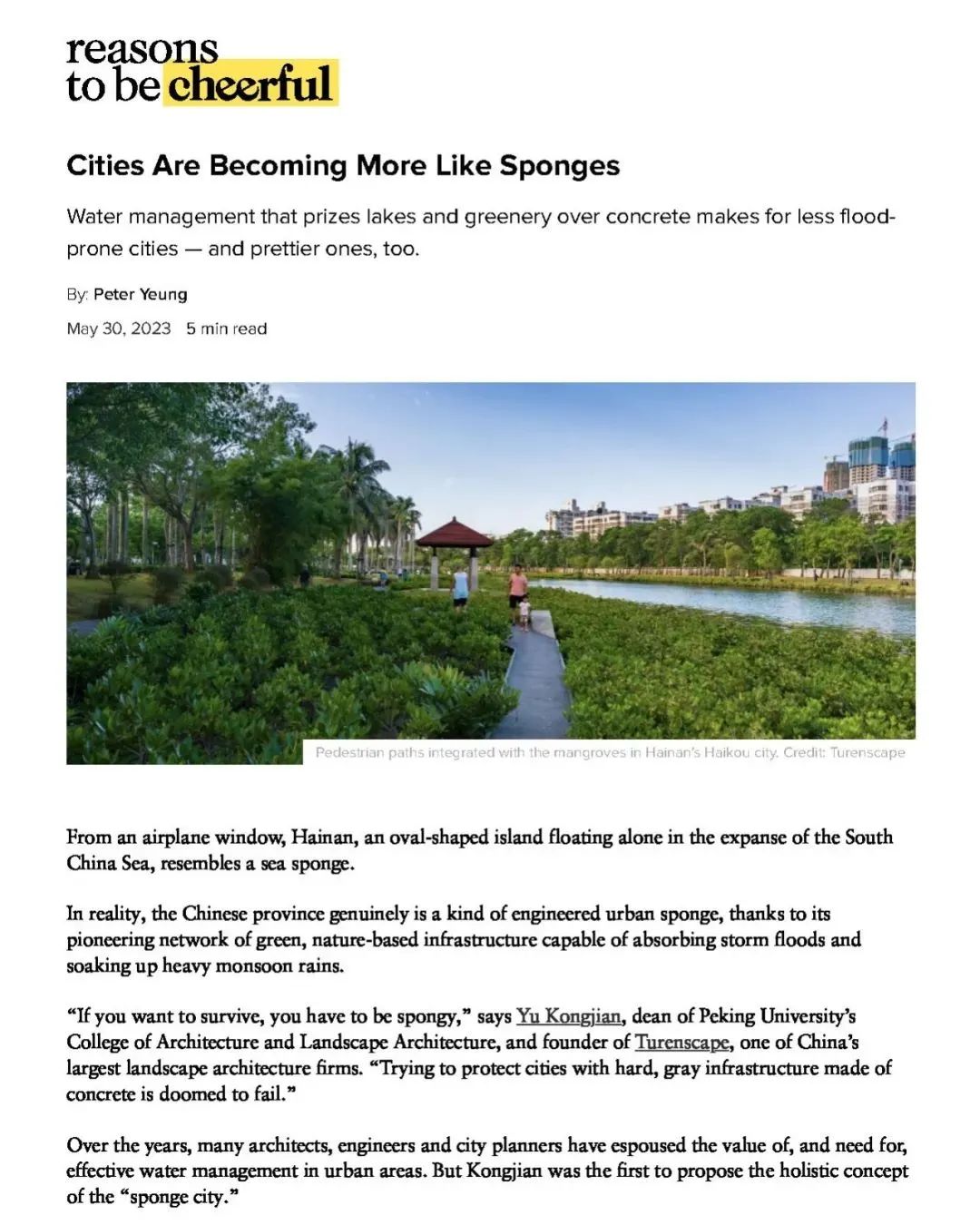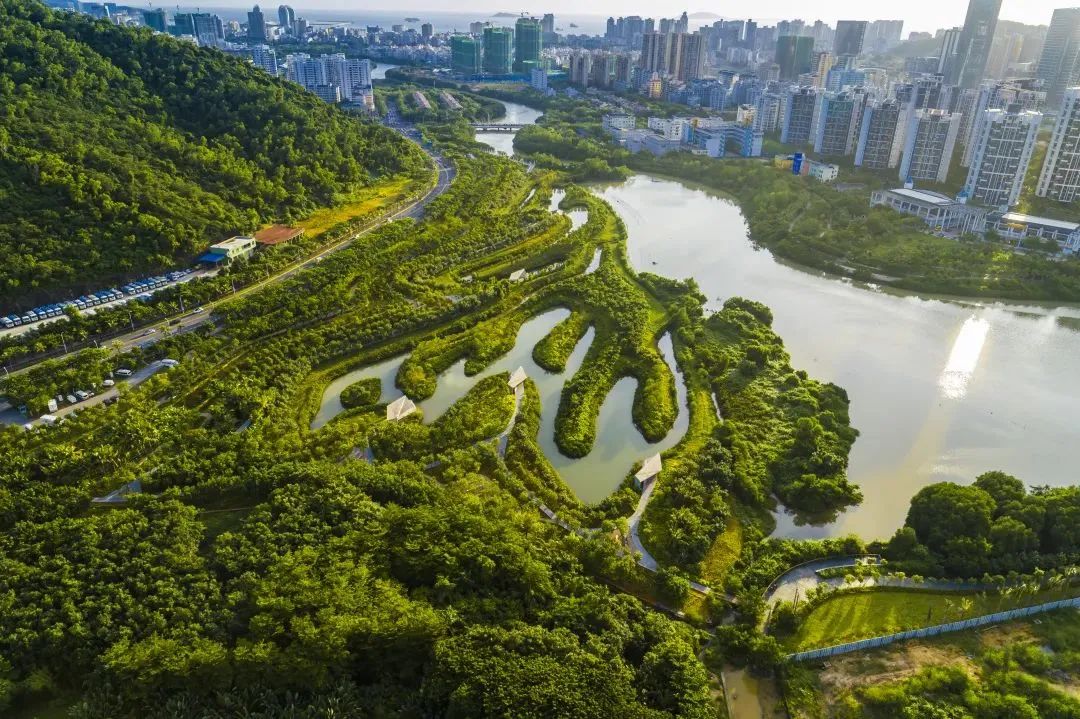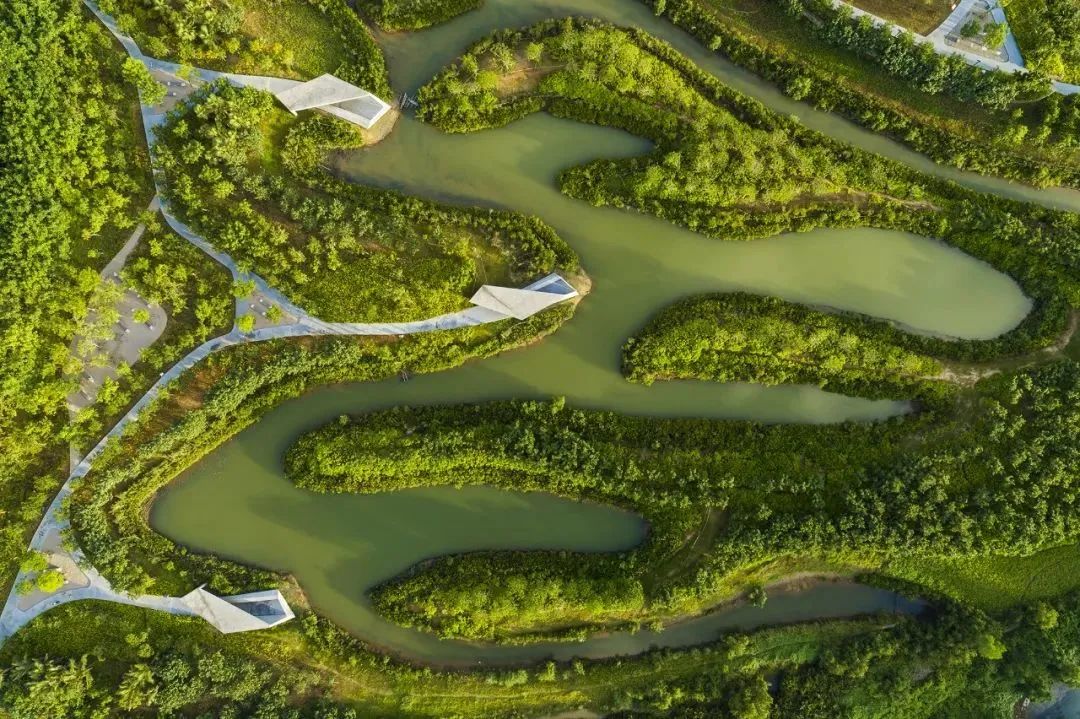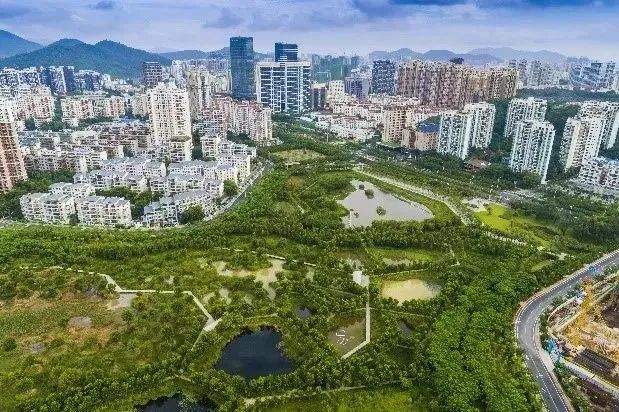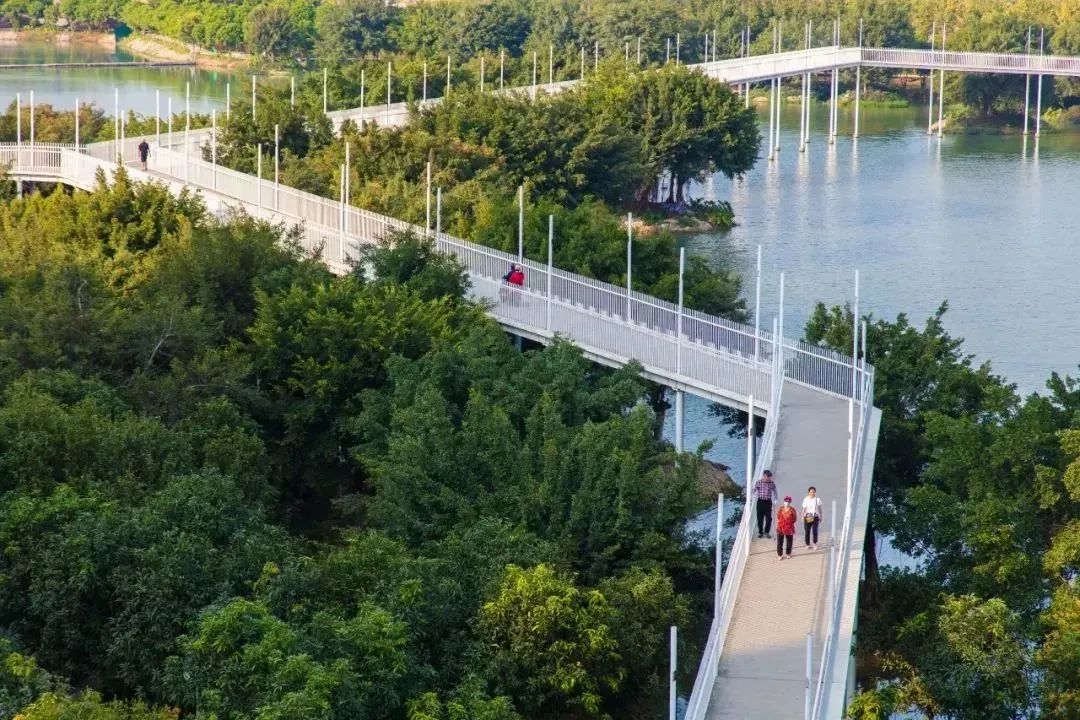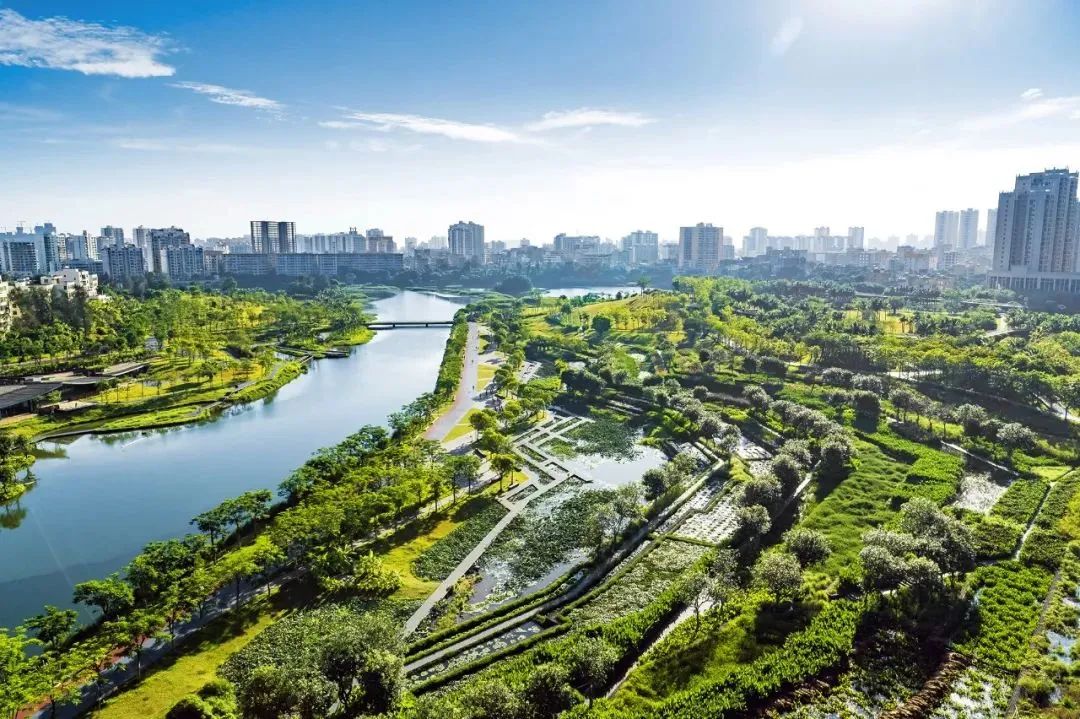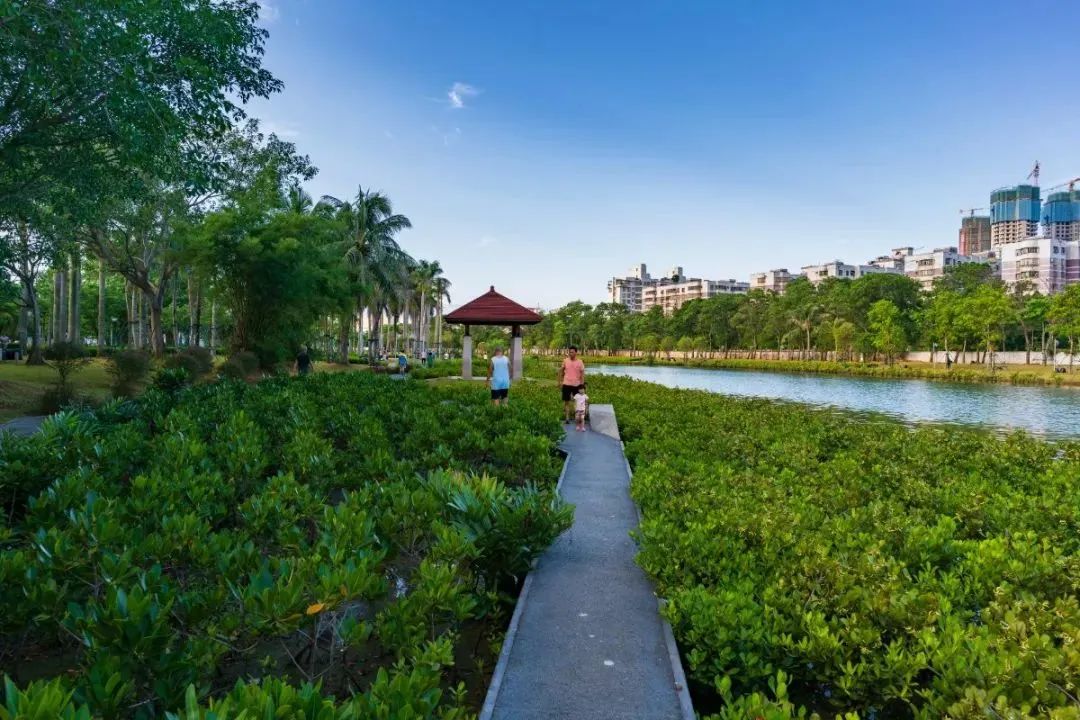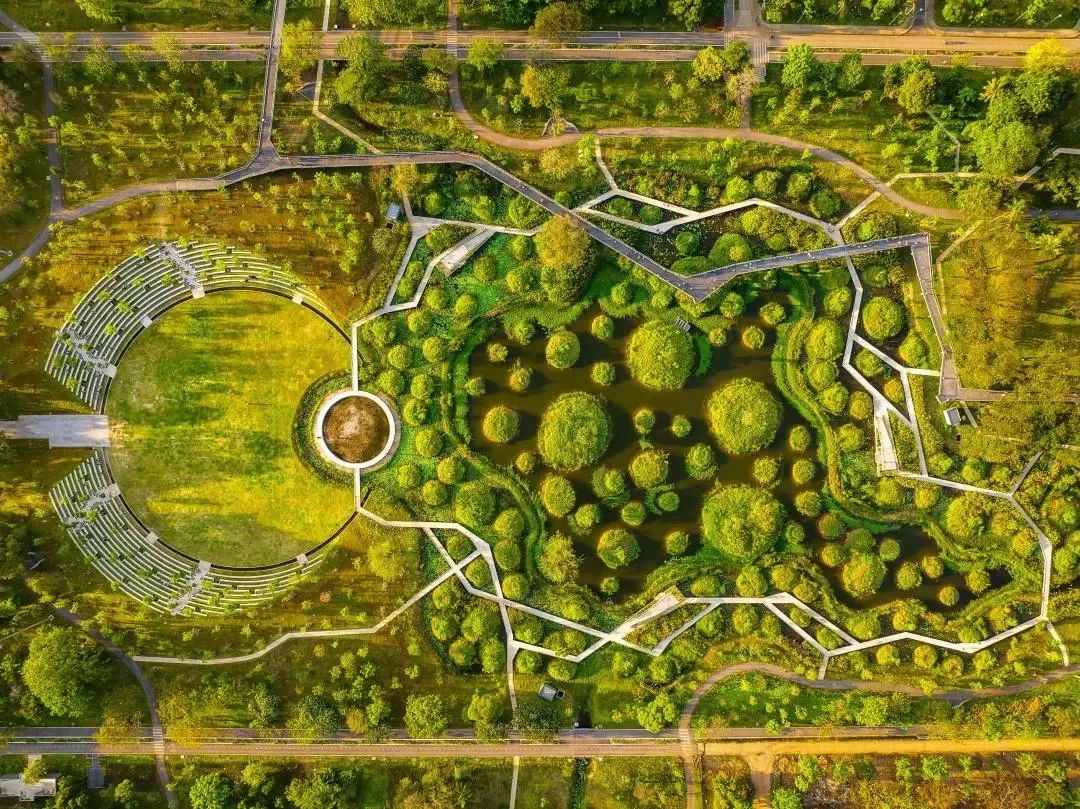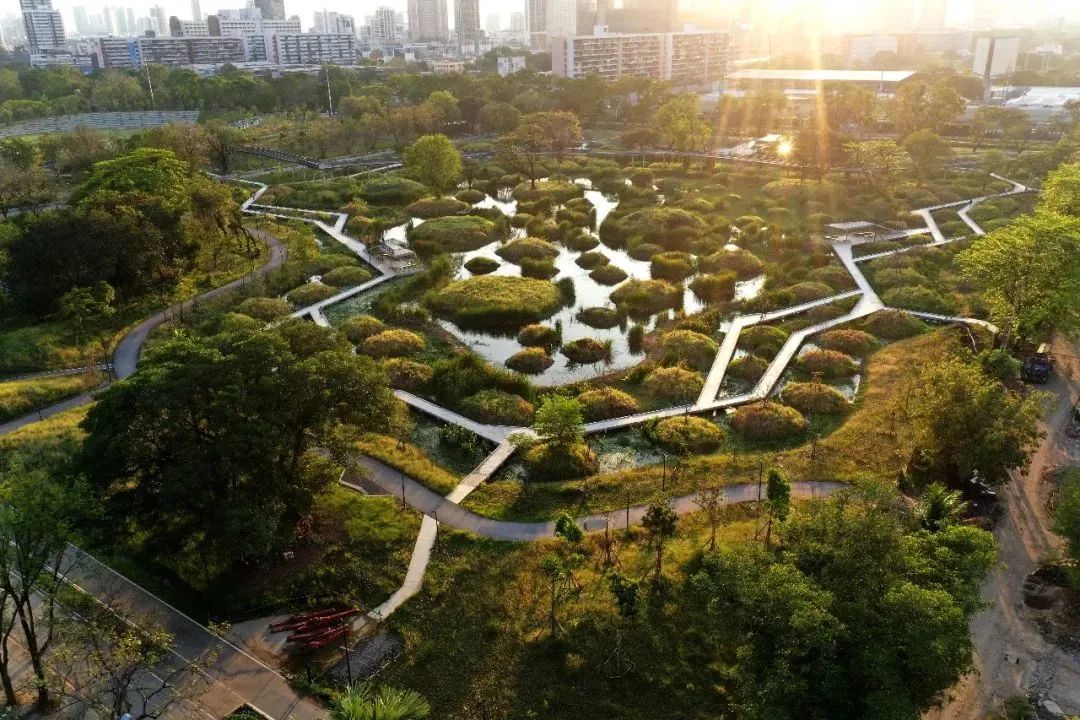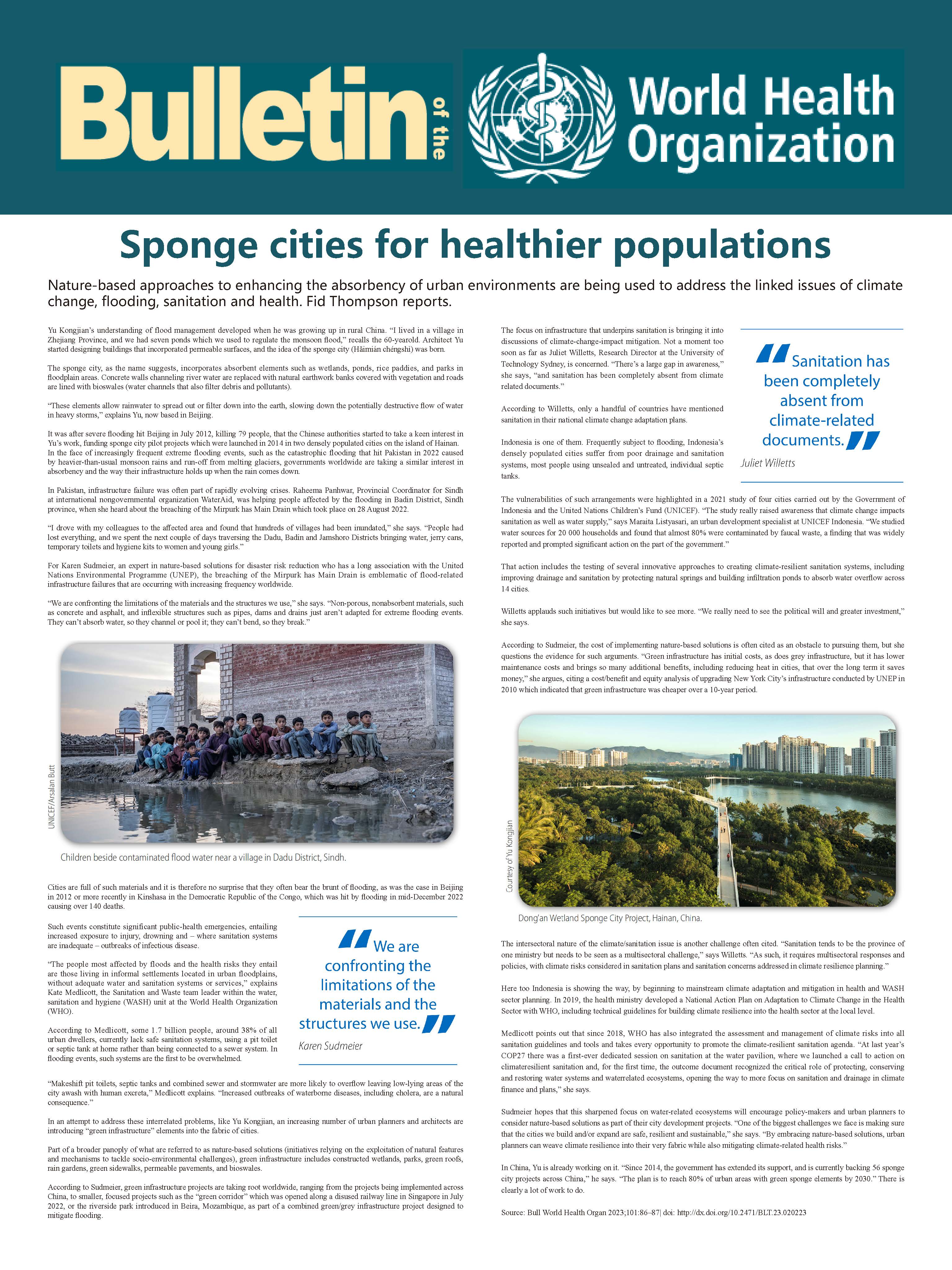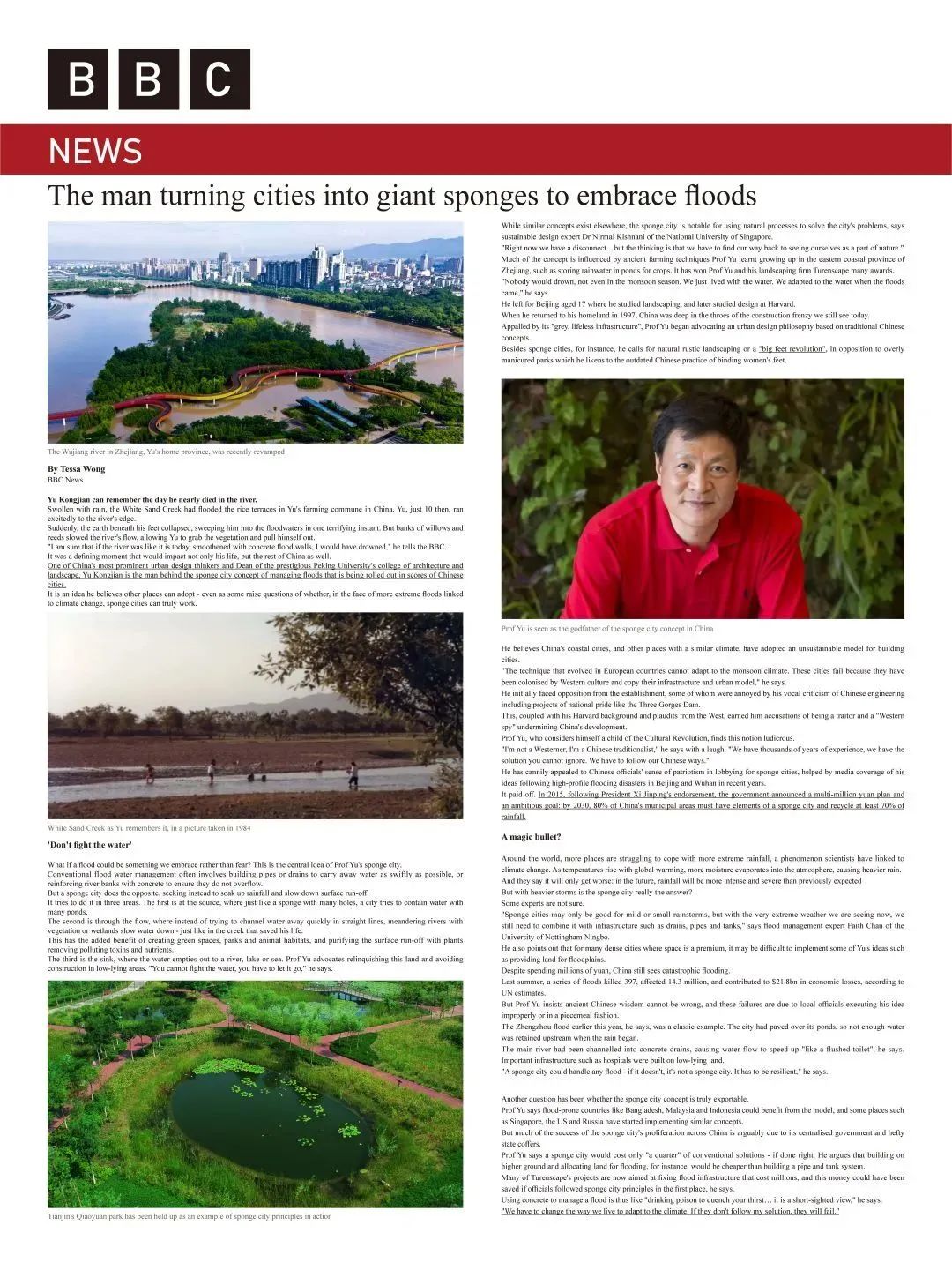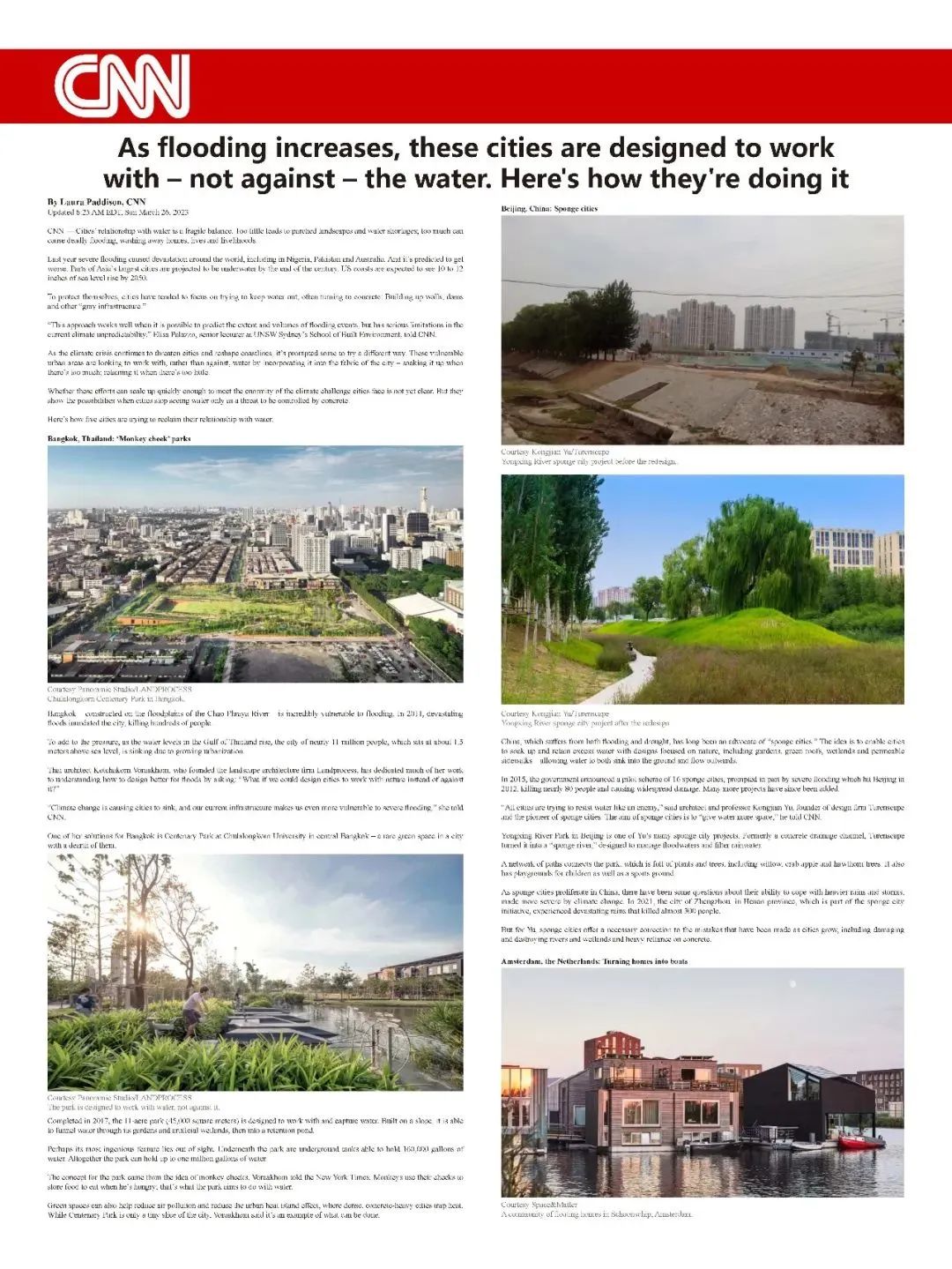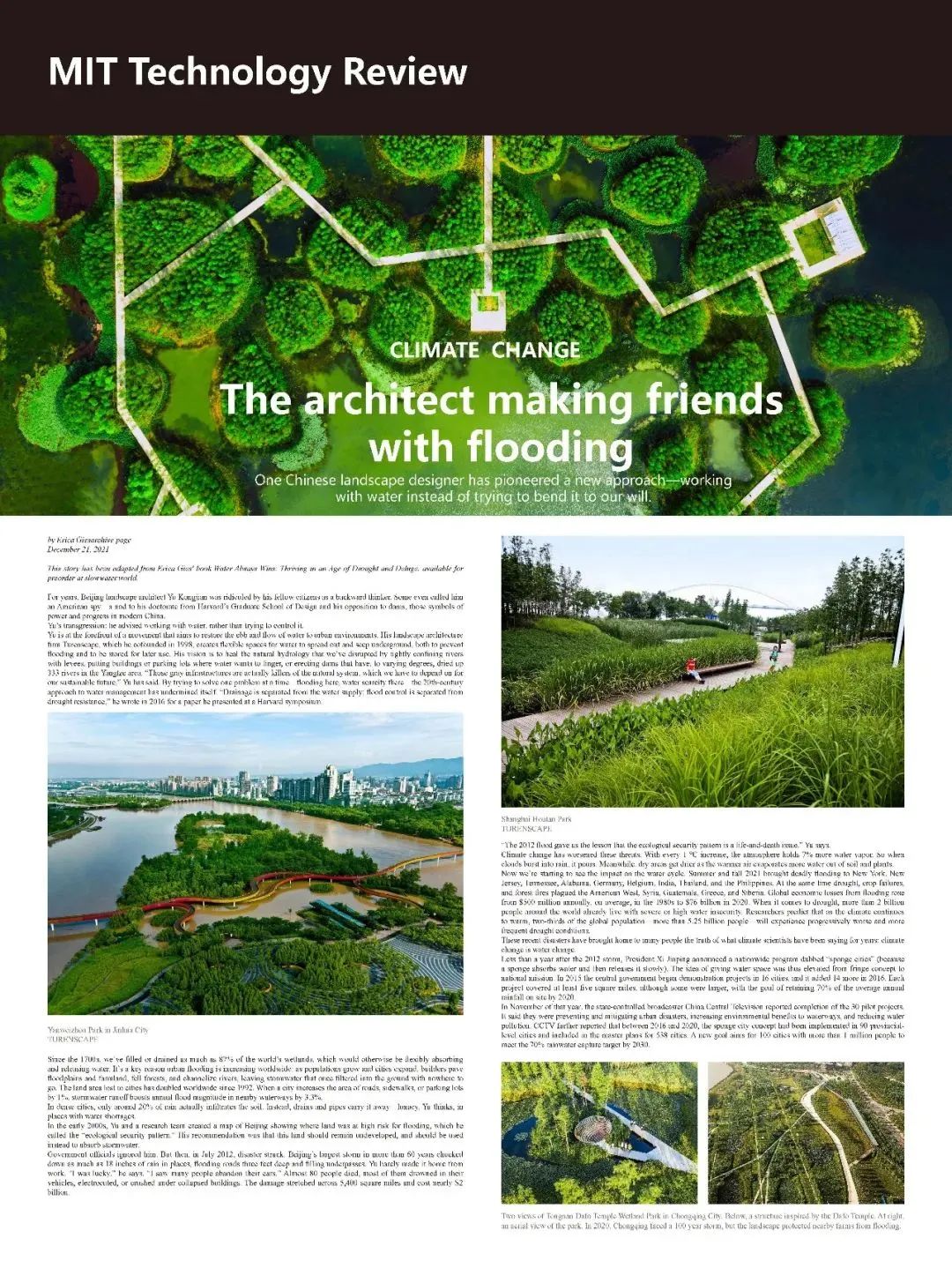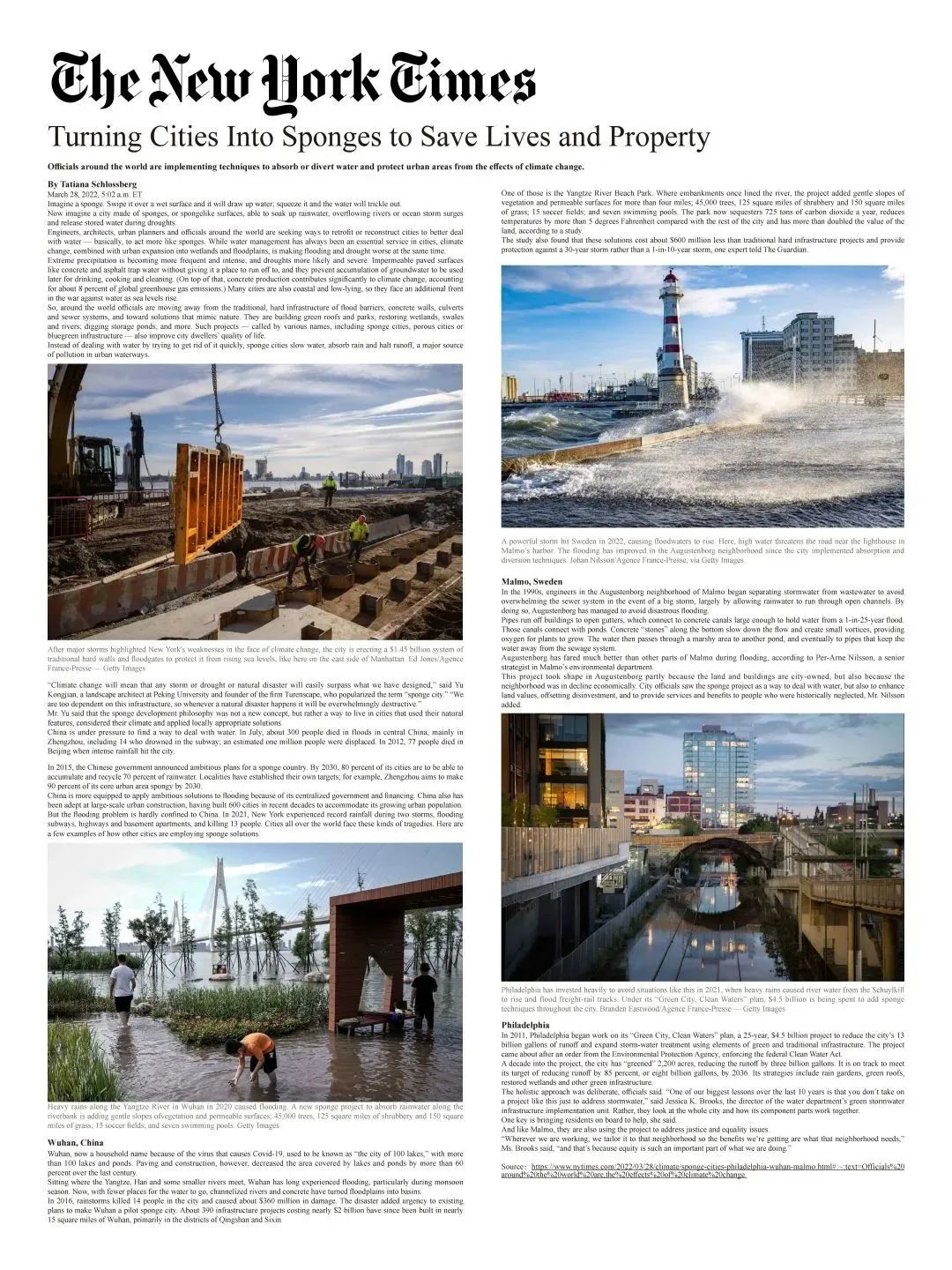“Inundation has virtually stopped,” says Kongjian.
Other efforts to turn Chinese cities into sponges have also proven effective. A study of Wuhan found its 389 sponge city projects across 38.5 square kilometers have not only reduced flooding, but sequestered 725 tons of CO2 a year, reduced temperatures by more than 3°C (5°F) and more than doubled the value of the land.
Adoption of the sponge city model is increasing globally, too. More than 100 “rain gardens” have been built in the Welsh city of Cardiff, which soak up 40,000 square meters of rainwater each year, lessening the burden on the sewer network. Philadelphia’s $4.5 billion Green City, Clean Waters plan, which will run until 2036, is already keeping 2.7 billion gallons of stormwater runoff and sewer overflow out of local waterways. The Orbital Forest of Tirana in Albania will see the city surrounded by a ring of two million trees, which will clean the air, limit urban sprawl and provide flood protection. In the Dutch city of Rotterdam, blue-green roofs have reduced water treatment costs by $75,000 annually and prevented roughly 10,000 tons of CO2 emissions.
Meanwhile, although the Global South is disproportionately suffering the effects of extreme weather, studies show there is an opportunity for cities worldwide to grow sustainably through nature-based infrastructure. A study by design firm Arup found that it is 50 percent more affordable than man-made alternatives, and 28 percent more effective.
Yet there are limits to what a sponge city can withstand. Research published in The Royal Society scientific journal found that while sponge cities should be able to process 1-in-30-year rainfall events, 19 of the 30 pilot cities in China have experienced flooding since 2014. Some 14 million people were impacted by floods in the city of Zhengzhou in 2021. Nearly 400 people died or went missing.
“Sponge cities can maybe deal with sea level rise of one or two meters, but five meters? No,” admits Kongjian. “But if the sponge city can’t stop it, nothing can. You have to move the city away.”

 京公海網(wǎng)安備 110108000058號(hào)
京公海網(wǎng)安備 110108000058號(hào)
